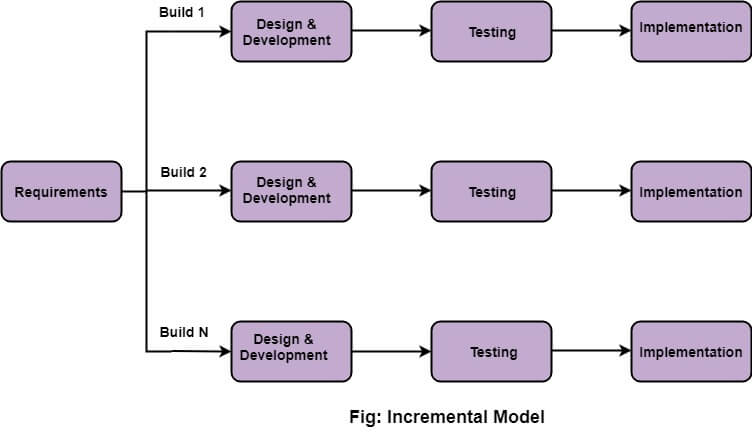In today’s fast-changing tech world, making software is like crafting tools for modern life. But how does it really work? We’ll walk you through each step of the software development process in plain language. Plus, we’ll uncover why this process matters and explore different ways people create software. Whether you’re a newbie in coding, just curious about tech, or a business enthusiast wanting to grasp the process, consider this guide your roadmap to understanding how software is born. Let’s jump right in and uncover how mere lines of code transform into the apps and software we rely on daily!
Contents
- What is Software Development Process?
- Purpose of a Software Development Process?
- Software Development Process Steps
- Types of Software Development Approaches
- Wrapping Up
What is Software Development Process?
Software development involves a well-structured lifecycle of processes aimed at crafting software products that align with prevailing market trends. Within the realm of software development, numerous distinct processes unfold. Thus, if you seek to understand the essence of software development, delving into the intricacies of these interconnected processes is crucial.
Software Development Process is the structured approach to developing software for a system or project, sometimes called the Software Development Life Cycle (SDLC). Several approaches, such as waterfall, spiral, and incremental development, can be used to include. These different approaches will focus the testing effort at different points in the development process. However, each approach is composed of the same basic steps of development.
Purpose of a Software Development Process?
A software development process (SDP) aims to ensure the effective and efficient development of software. It does this by providing a set of steps or phases that need to be followed, as well as a framework for communication and collaboration between the different stakeholders involved in the project.
Here are some of the specific purposes of a software development process:
-
Ensure quality:
A well-defined SDP can help guarantee the development of software to a high standard of quality. This is because the process will typically include steps to identify and address potential problems early on, such as requirements gathering, design reviews, and testing.
-
To control costs:
Enforcing a software development process can aid in cost control by ensuring thorough project planning and management. This is because the process will typically include steps to estimate the cost of the project, track progress, and identify and mitigate risks.
-
To shorten development time:
A software development process can help to shorten development time by providing a structured approach to the development. This is because the process will typically break the project down into smaller, more manageable tasks, and it will also provide a framework for communication and collaboration between the different stakeholders involved in the project.
-
To improve communication:
A software development process can help to improve communication between the different stakeholders involved in the project. This is because the process will typically include steps to document requirements, designs, and test cases. The documentation can then serve as a means to communicate the project’s progress and address any arising issues.
-
To meet the needs of the users:
A software development process can help to ensure that the software meets the needs of the users. This is because the process will typically include steps to gather and document user requirements. Utilizing this documentation can ensure that the software is developed to meet the users’ needs.
In addition to these specific purposes, a software development process can also help to improve the overall efficiency of the development process by providing a framework for organizing and managing the different tasks involved. This can help to avoid duplication of effort, ensure that tasks are completed on time and within budget, and identify and resolve potential problems early on.
Software Development Process Steps
The software development process consists of several interconnected steps that guide the creation of a software product from conception to deployment and maintenance. While different methodologies might organize these steps differently, here’s a general outline of the software development process steps:
- Step 1: Planning
- Step 2: Implementing
- Step 3: Testing
- Step 4: Deployment and Maintenance
Step 1: Planning and Requirements Analysis
A fundamental task in software development is conducting a thorough requirements analysis. Customers often possess a broad concept of their desired outcome but lack the specifics of software functionality. Seasoned software engineers excel at identifying incomplete, ambiguous, or contradictory requirements during this phase. Regular showcases of live code can help mitigate the risk of inaccurate requirements. After collecting the general requirements from the client, the project team must undertake a comprehensive analysis of the project’s scope and clearly articulate it. This document is commonly known as a Statement of Objectives (SOO).
Step 2: Implementation
The implementation phase is where skilled software engineers translate the project’s requirements into actual code.
Step 3: Testing
Software testing stands as a critical and integral phase within the software development process. This stage ensures that defects are identified at the earliest opportunity. Additionally, it offers an impartial, independent assessment of the software, enabling users to comprehend and evaluate the risks associated with its deployment. Software testing is the process of validating and verifying that a software program/application/product:
- Aligns with the design and developmental requirements
- Functions as anticipated
- Consistent characteristics can be deployed.
Step 4: Deployment, Maintenance, and Enhancement
Once the code has undergone meticulous testing, gained approval for release, and has been distributed or sold, deployment is initiated in a production environment. This phase may involve installation, customization, thorough testing, and an extended evaluation period. Adequate training and support are vital since the software’s effectiveness hinges on correct usage. Sustaining and enhancing the software to address newly identified defects or requirements can demand considerable time and effort, particularly when overlooking requirements necessitates software restructuring. Each action undertaken in the project is documented for future reference and continual improvement.
Types of Software Development Approaches
There are many different software development approaches, each with its own advantages and disadvantages. Some of the most common approaches include:
1. Waterfall:
The waterfall approach is a linear, sequential approach to software development. Before the next stage can begin, each stage of the development process must be completed, this approach is often used for large, complex projects where there is a clear understanding of the requirements. However, it can be inflexible and can lead to delays if the requirements change.
 2. Incremental:
2. Incremental:
The incremental approach is a more iterative approach to software development. The software is developed in a series of increments, with each increment adding new features or functionality. This approach is often used for smaller, less complex projects or for projects where the requirements are not fully known at the start.
3. Agile:
Agile is a set of software development methodologies that emphasize flexibility and iterative development. The most popular agile methodology is Scrum, which breaks the development process down into short sprints, with each sprint focused on delivering a working product increment.
 4. Spiral:
4. Spiral:
The spiral approach is a combination of the waterfall and incremental approaches. The project is broken down into a series of spiral phases, with each phase consisting of planning, analysis, design, construction, testing, and evaluation. This approach allows for more flexibility and risk management than the waterfall approach.
Wrapping Up
The expenditure of time and funds in software development varies greatly based on project requirements. In such scenarios, it’s advisable to engage with a proficient Software Development Company, such as an offshore software development entity, that comprehends their craft. This approach helps mitigate the risk of squandering time, effort, and financial resources invested in the endeavor. Entrusting a novice developer to execute the task can potentially lead to unwelcome errors persisting even after the project’s conclusion. This isn’t to suggest that fledgling developers lack competence. Nonetheless, when faced with budget constraints and a desire to minimize risks, the prudent course of action is to collaborate with seasoned professionals.






 2. Incremental:
2. Incremental:
 4. Spiral:
4. Spiral: